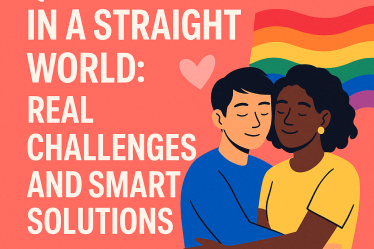
Love languages are everywhere—from dating apps to therapy sessions, and even social media memes. The idea is simple: understanding how you give and receive love can help deepen emotional intimacy. But what if this well-meaning concept is quietly holding your relationship back?
While the five love languages—Words of Affirmation, Acts of Service, Receiving Gifts, Quality Time, and Physical Touch—can improve communication, relying too heavily on them can create blind spots, unrealistic expectations, and emotional stagnation.
In this article, we’ll uncover the hidden downsides of love languages, how over-identifying with yours could limit growth, and how to adopt a more emotionally intelligent approach to love.
What Are Love Languages, and Why Do They Matter?
Love languages, introduced by Dr. Gary Chapman in his 1992 book The 5 Love Languages, were designed to help couples understand how they express and receive love. The five primary love languages are:
- Words of Affirmation – Verbal expressions of love and appreciation
- Quality Time – Giving someone your undivided attention
- Receiving Gifts – Thoughtful presents as expressions of love
- Acts of Service – Doing helpful things to show you care
- Physical Touch – Hugs, kisses, and other forms of physical affection
They’ve become relationship staples—and for good reason. Understanding your partner’s love language can help avoid miscommunication and boost intimacy. But they’re not a cure-all.
The Hidden Downsides of Over-Identifying with One Love Language
While love languages are helpful, over-relying on them can become problematic. Here’s why:
- Rigid labels create narrow expectations. Identifying too strongly with one love language can make you overlook other ways love is expressed.
- You may disregard your partner’s efforts. If they express love differently, you might not recognize it at all.
- Emotional entitlement creeps in. Expecting love only in your preferred form can lead to resentment or disappointment.
- You miss opportunities for growth. Emotional connection isn’t static—it’s something that evolves with openness and maturity.
Example: Someone who craves physical touch might dismiss acts of service as “not real love,” when their partner sees that as a heartfelt expression.
How Love Languages Might Be Holding You Back Emotionally
The real trouble starts when love languages become a crutch:
- You avoid emotional discomfort. Rather than addressing deeper issues, you focus on surface-level needs.
- Growth is stunted. If you only receive love one way, you’re missing out on a richer emotional experience.
- You misjudge your partner. A partner who doesn’t “speak your language” isn’t necessarily incompatible—they might just express love differently.
- Resentment builds. If expectations aren’t met exactly, discontent and distance can take root.
“Love languages should be a bridge, not a box,” says therapist and relationship coach Lisa Olivera.
Are You Using Your Love Language as a Crutch?
It’s easy to use your love language as a default excuse for unmet needs. But are you leaning on it too hard?
Signs you might be:
- You feel unloved unless your preferred love language is used
- You disregard or undervalue other forms of love
- You expect your partner to know and act on your language without communication
- You’ve stopped learning how your partner experiences love
Rather than demanding love in a specific form, it’s more empowering to cultivate flexibility and emotional awareness.
A Healthier Approach—Balancing Love Languages with Emotional Intelligence
Instead of using love languages as a checklist, use them as a launchpad for emotional growth. Here’s how:
1. Recognize All Five Love Languages
Even if you have a favorite, explore the others. Love is multidimensional—so should your understanding of it be.
2. Communicate Openly
Don’t assume your partner “should just know.” Ask them what makes them feel seen and heard.
3. Practice Flexibility
Try expressing love in ways that aren’t second nature to you. This builds empathy and deepens connection.
4. Grow Your Emotional Intelligence
Listen to your partner with curiosity. Observe how they react to different forms of affection. Emotional intelligence isn’t just about knowing feelings—it’s about managing and responding to them skillfully.
Tip: Take the love languages quiz again every year as a couple. Preferences often evolve with life changes and emotional development.
Conclusion: Don’t Let Your Love Language Define Your Relationship
Love languages are helpful tools, not hard rules. They can guide us—but they shouldn’t confine us. The real magic in relationships comes from adaptability, curiosity, and a willingness to learn each other over time.
So instead of asking, “Why doesn’t my partner speak my love language?” try asking, “How can we grow our emotional fluency together?”
FAQs
Can love languages change over time?
Yes. As you grow emotionally or go through life changes (parenthood, stress, trauma), your love language may shift.
Is it bad to have a strong preference for one love language?
Not at all. The issue arises when it becomes the only acceptable form of love you’ll receive.
How can I learn to speak my partner’s love language?
Start with curiosity. Ask them what makes them feel loved. Then make small, consistent efforts to express love in that way.
What if my partner and I have totally different love languages?
You don’t need to be the same—you just need to be aware and intentional. With communication and compromise, different love languages can actually complement each other.
Are love languages backed by science?
While the concept is popular and widely accepted, research on love languages is limited. Some studies support their usefulness in improving communication, but emotional intelligence and compatibility play a larger role in long-term satisfaction.



